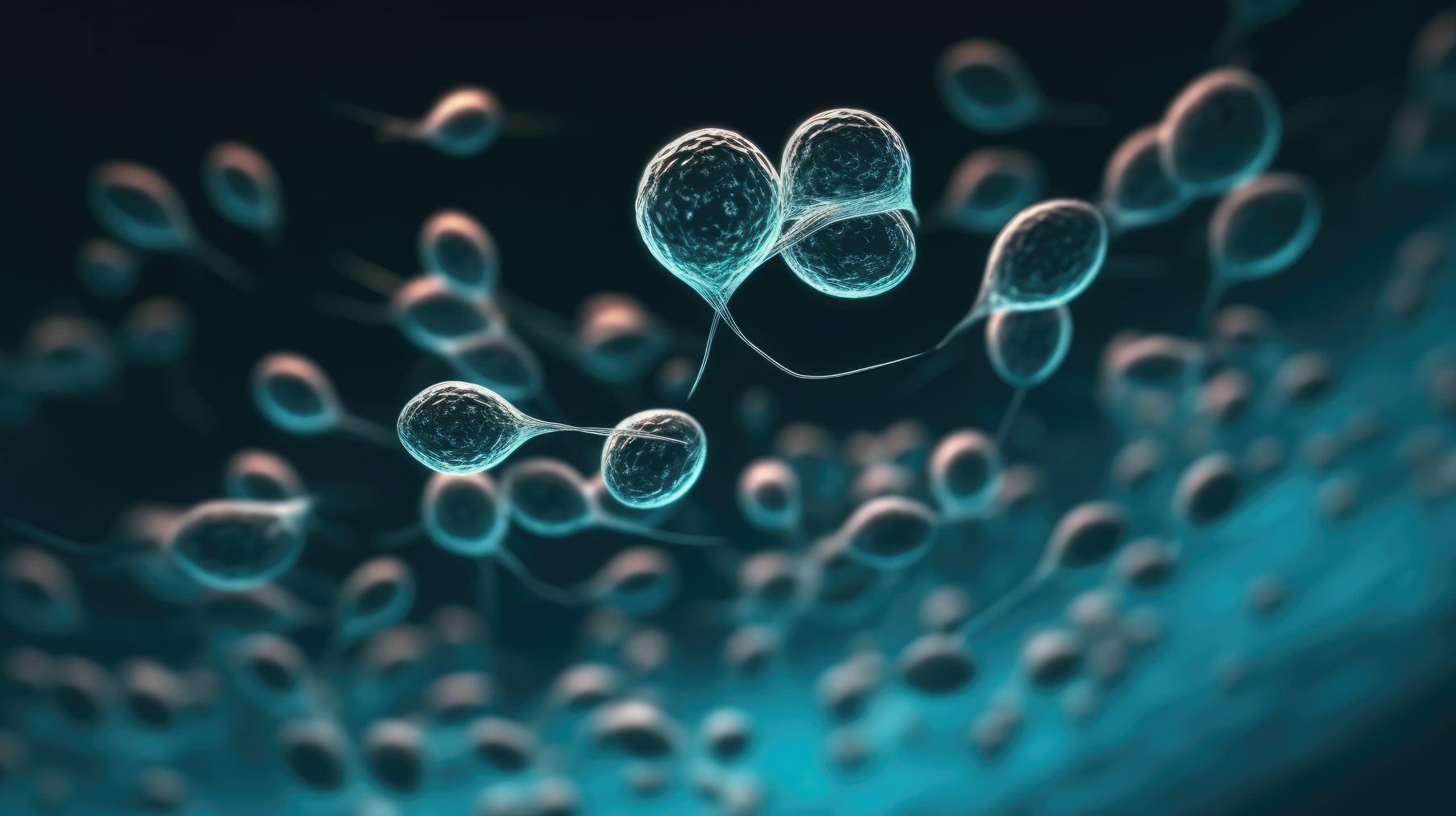IVF with Vasectomy: Everything You Need to Know

Vasectomy is a common form of permanent male birth control. Around 6% of the American male population (500,000) undergo a vasectomy each year. It’s no surprise that a significant number (7.4%) of these men have a change of heart at some point in their lives and decide to pursue fertility. IVF can be a viable path to parenthood for these men.
IVF with a vasectomy involves retrieving sperm directly from a man’s testicles and using it to fertilize an egg outside the body, then implanting it into the uterus.
In this article, we’ll explore how IVF works in the context of a previous vasectomy, including reasons for choosing IVF, the necessary steps and procedures involved, and the factors that influence success rates.
How IVF with Vasectomy Works
IVF is a viable option for men who have had a vasectomy and now wish to have children. Here’s the step-by-step breakdown of how the process works:
Sperm Retrieval
After a vasectomy, sperm cannot travel through the vas deferens. This means that it must be retrieved directly from the testicles or epididymis.
Typically, this process involves using a needle under local anesthesia in a procedure known as sperm aspiration. Two common methods for this are Percutaneous Epididymal Sperm Aspiration (PESA) and Testicular Sperm Aspiration (TESA). Both have been found to yield similar pregnancy and miscarriage rates while offering specific disadvantages and drawbacks. Your doctor will determine the procedure that is right for you.
This step is the only difference between IVF with a vasectomy and a standard IVF process. Without a vasectomy, the male partner would collect sperm into a cup.
Egg Retrieval
The female partner undergoes ovarian stimulation using hormonal medications to produce multiple eggs. Once the eggs are mature, they are retrieved from the ovaries via a minor surgical procedure.
Fertilization
The eggs are fertilized with the sperm in a laboratory. At CNY, but not always the case at other fertility centers, fertilization occurs through the use of a technique called intracytoplasmic sperm injection (ICSI), where a single sperm is injected directly into an egg.
Embryo Culture
The fertilized eggs become embryos that grow in the lab for several days. During this time, they are monitored for development and quality.
Embryo Transfer
One or more healthy embryos are selected and transferred into the female partner’s uterus. This can take place via a Fresh Embryo Transfer, usually five days after retrieval, or a Frozen Embryo Transfer at a time of the couple’s choosing. This is a straightforward procedure that does not require anesthesia.
Pregnancy Test
Around 9-11 days after the embryo transfer, a pregnancy test is conducted to determine if the procedure was successful.
IVF Success Rates After Vasectomy
The success rates for IVF following a vasectomy can vary. Factors influencing the success rates include
Generally, IVF combined with ICSI offers a promising solution for couples seeking to conceive after a vasectomy.
According to research from the Canadian Fertility and Andrology Society, live birth rates per fresh IVF cycle for a post-vasectomy couple using the female partner’s eggs are :
- 33.7% for women under 35
- 28.7% for women aged 35-39
- 21.9% for women aged 40 and older.

Source: Witherspoon L, Flannigan R. Fertility treatment options after vasectomy. BCMJ. 2021 Mar;63(2):62-6.
Cumulative pregnancy rates with IVF/ICSI, which involve one or more embryo transfers from a single egg retrieval, are higher.
For one to four embryo transfers, pregnancy rates are
- 46.9% to 69.4% for women under 35
- 35.5% to 62.0% for women aged 35-40
- 18.2% to 34.0% for women over 40

Source: Witherspoon L, Flannigan R. Fertility treatment options after vasectomy. BCMJ. 2021 Mar;63(2):62-6.
How Long Does it Take to Get Pregnant with IVF after Vasectomy?
This same study from British Columbia found that the average time from starting IVF/ICSI to confirmed pregnancy is around 8 months.
Success Rates for IVF vs. Vasectomy Reversal
There are several factors that influence the success rates of IVF after vasectomy vs vasectomy reversal. Understanding these factors is important when it comes to making the right choice for you.
The most important factor impacting IVF/ICSI and vasectomy reversal outcomes is the age of the female partner’s age.
IVF with sperm aspiration is generally recommended over vasectomy reversal for couples if the female partner is older than 35, or if the female partner experiences other significant reproductive issues.
Natural pregnancy rates decrease with age. Here, you can see the rates of success within one year of trying to conceive per age group.
- 91% for women under 30
- 77% for women aged 31-35
- 53% by age 40
Pregnancy rates for vasectomy reversal are slightly higher than a single IVF/ICSI cycle but similar to cumulative IVF/ICSI rates. Here’s a breakdown of findings published in BJ Medical Journal.5
For women aged 30-35
- Vasectomy reversal pregnancy rates are 78.4%
- Single-cycle IVF/ICSI rates are 56.6%
- Cumulative IVF/ICSI rates can reach 69.4%
For women aged 35-39
- Single-cycle IVF/ICSI rates are 28.7%
For women over 40
- Vasectomy reversal pregnancy rates are 42%
- single-cycle IVF/ICSI rates are 19-27.3%
- cumulative IVF/ICSI rates can be up to 34%
Time to pregnancy is generally shorter with IVF/ICSI, averaging 8.2 months compared to 16.3 months for vasectomy reversal.
A 2018 study published in Human Reproduction compared the success rates between three groups of men :
- Men who underwent a vasectomy reversal and used only natural fertility methods.
- Men who underwent a reversal and then opted for IVF.
- Men who used only IVF/ICSI.
Among the reversal group who tried to conceive naturally, the cumulative live birth rate was 40.0%.
The other 54 patients (the ‘switchers’), who initially had a reversal but later used assisted reproductive technologies (ART), had a cumulative live birth rate of 57.4%.
The 64 patients who went directly to IVF/ICSI had a cumulative live birth rate of 43.8%.
The difference in delivery rates between the reversal group (40.0%) and the primary IVF/ICSI group (43.8%) was not statistically significant.
However, as mentioned above, the time to pregnancy was significantly shorter in the primary IVF/ICSI group, averaging 8.2 months compared to 16.3 months in the reversal group.
Vasectomy Reversal: A Viable Alternative to IVF with Aspiration?
IVF after vasectomy is more common than a vasectomy reversal. However, vasectomy reversals can be a desirable and viable way to achieve pregnancy.
Factors that impact whether vasectomy reversal is a viable option include the type of reversal, the time since the vasectomy, the female partner’s age, and previous fertility issues prior to the vasectomy.
Why Choose IVF over Vasectomy Reversal?
A man might choose IVF over a vasectomy reversal for several reasons:
Higher Success Rates for Immediate Pregnancy
IVF can offer a more direct route to achieving pregnancy, especially when combined with intracytoplasmic sperm injection (ICSI). This method can often yield quicker results compared to the time it may take for sperm to reappear in the ejaculate after a reversal.
Female Partner’s Age
If the female partner is older, time may be a critical factor. IVF can help couples achieve pregnancy faster, an extremely valuable factor when considering how fertility declines dramatically with age.
Previous Reversal Failure
If a vasectomy reversal has been attempted previously and was unsuccessful, IVF provides an alternative pathway without the need for additional surgeries. Vasectomy reversals successfully return sperm to the ejaculate in 85%-90% of men. This means that between 10-15% of men who undergo a reversal will still require PESA or TESA extraction methods and IVF to conceive.
Complex Medical History
Men with complex medical histories leading to concerns about potential risks and complications may prefer the less invasive sperm aspiration procedure.
Desire for Immediate Family Planning
Couples may prefer IVF because it allows for the retrieval of multiple eggs and the creation of several embryos that can be frozen for future use.
Reduced Risk of Surgical Complications
Surgery to reverse vasectomy comes with various risks, such as infection, bleeding, and chronic pain. IVF with sperm aspiration involves less invasive techniques with fewer risks.
Permanent Reversal is Not Necessary
IVF is a good option for men who wish to avoid permanently reversing their vasectomy, especially if they are uncertain about wanting more children in the future.
IVF with a Vasectomy: The Bottom Line
In vitro fertilization (IVF) can be a solution for people who have undergone a vasectomy but now wish to have children.
For IVF to be successful after a vasectomy, a doctor needs to retrieve sperm directly from the testicles or epididymis using a needle under anesthetic–a procedure known as sperm aspiration.
Though retrieved sperm might be immature and have a low count, it can be effectively used with techniques such as intracytoplasmic sperm injection (ICSI).
This sperm is then used to fertilize an egg outside the body to create an embryo, which is then implanted into the uterus. The success rates of IVF/ICSI after a vasectomy can vary between 18.2% and 69.4%, largely depending on the age of the female partner. For tens of thousands of men, IVF after vasectomy offers renewed hope and the genuine possibility of creating and growing a family.



